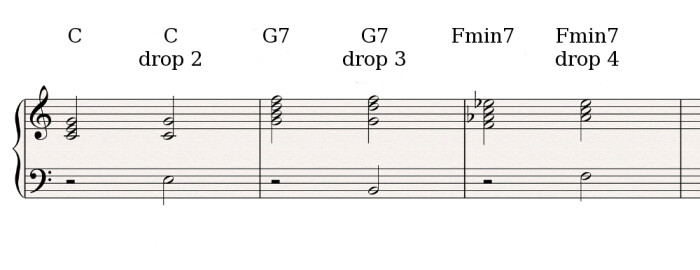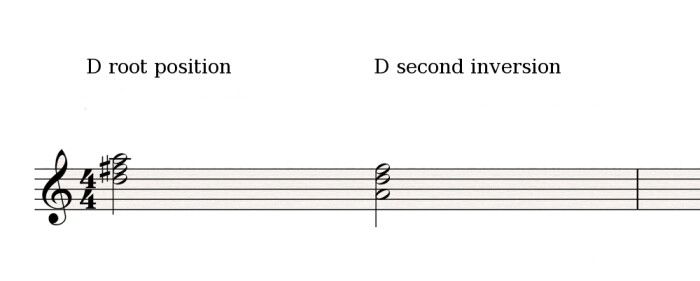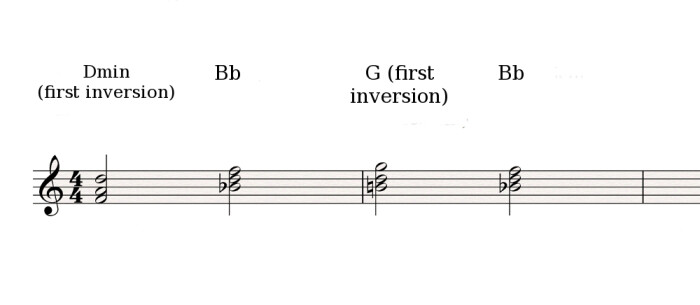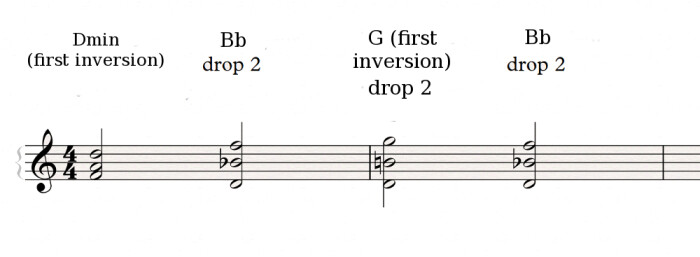In the previous article we briefly studied the movements of each voice within the context of voice-leading, based on the motion of the root. Today we'll focus on a particular sort of voicing: drop voicings.

“Drop” in this case refers to the downward motion of a specific note.
Let me explain what I mean.
Drops
In article 32 I introduced you to the concept of close and open position chords. As you surely remember, a closed chord refers to a chord (or inversion) that doesn’t go beyond a single octave, while an open chord can extend over several octaves. Well, one of the easiest ways to open up these chords is using the “drop” technique. This method basically consists in taking any note and moving it one octave down.
The notation
The notation
The notation of these voicing is a bit peculiar. First of all — and this is what’s most unusual about the notation of these voicings — the voices aren’t numbered in the usual order based on the root, then the third, the fifth, etc. No, in this case, the numbering is top-down, regardless of the chord inversion in question: the top-most voice is the first one, the second one is the one right underneath it, etc. Moreover, the voicings are named according to the voice that was dropped. A “drop 2” voicing, for instance, means that the second voice moved one octave down; in a “drop 3” it’s the third voice that moves down, etc.
Here are some examples:

Consequently, this notation isn’t very explicit because it doesn’t allow you to identify:
-
The note that has been dropped (since it varies depending on the inversion)
-
How many octaves the note dropped
-
How many iterations of this dropped note you create
This means you will have to determine the inversion of the chord before you can define the drop of the voicing.
The rules
There are some basic rules when creating drop voicings, like: never drop the first voice. In fact, the drop method is mainly used when when you want to keep the first voice as the melodic voice. It’s also important to note that dropping the top note of a closed chord doesn’t really open the chord, it merely results in an inversion. Hence, in the following example, dropping the A of the D chord you only get the same chord in its second inversion:

But let’s move on. To harmonize a melodic line with an open chord you first have to find the appropriate chord, as well as its eventual inversion, so you have the note you want in the top-most position.
Here’s an example:

Next you can drop one or more voices: Indeed, you can drop several voices, as the following example shows:





